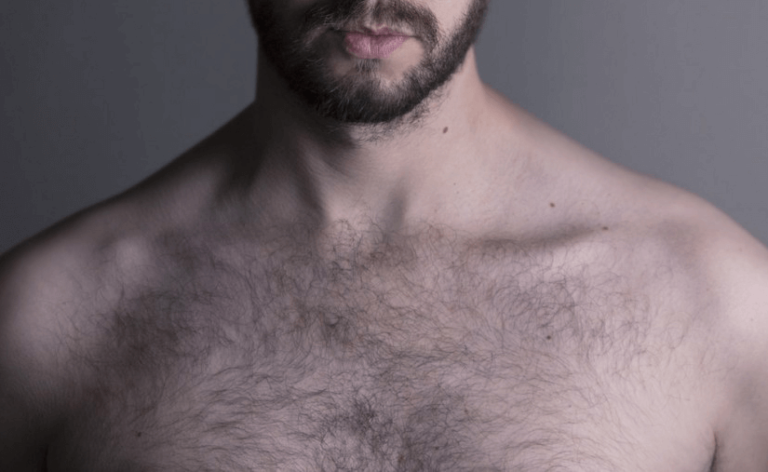Body Hair Transplantation
Body hair transplantation is a procedure designed to restore hair most commonly to the chest and abdomen area, but can also be applied to the pubic hair, axilla, and any other area hair is desired, to both thicken the existing hair or to provide hair growth where there is none. The absence of hair could be due to genetics, prior electrolysis, laser hair removal, or even surgery scar repair, burns or other types of accidents. Some patients seek to have restored only a thin amount of coverage or filling-in of a limited area (i.e. central chest or pubic triangle), while others desire a thick chest and central abdomen area. For some of these cases where maximum density is desired, a second procedure may be necessary.
Another type of body hair transplant is actually when these body hairs are used as donor hairs to help fill in thinning or balding areas of the scalp. This FUE procedure is described in further detail below.

Donor Hairs
The donor hairs come from the scalp, which typically grow like normal body hair in their texture and other characteristics, but with one exception – they continue to grow as if they were on the scalp – and therefore need to be trimmed monthly. Once transplanted, the hairs are permanent. To provide a natural appearance, the hairs are transplanted as one and two hair grafts, the natural way body hair grows. Other steps taken to assure naturalness include: the careful placement of the grafts at the exact correct angle and direction, the use of all-microscopically dissected grafts that can be placed in the smallest possible incisions so as to minimize scarring, and even the aesthetic distribution of any existing gray hairs into the restored areas. Note that these hairs transplanted into the body are no longer available for transplanting into the scalp if the patient desires to undergo restoration of any male pattern hair loss that may develop in the future, thus meaning that there will be fewer hairs available for this area.
A Typical Body Hair Procedure
A procedure typically involves the placement of 200 to as many as 3,400 or more one and two hair grafts, depending upon the desired density and the size of the areas to be covered. Performed under a mild oral sedative, the three- to eight-hour procedure is essentially painless, as is the recovery period. The only exception is when filling large areas of the chest, the anesthetizing process can be somewhat uncomfortable, therefore some patients choose to have it performed under intravenous sedation under the supervision of an anesthetist in one of our accredited procedure rooms. For the first five days after the procedure, tiny crusts are around each transplanted hair. By the second day, patients are able to travel home and resume normal activities without any sign of having had a procedure. Sutures that are placed in the donor area are dissolvable so there is no need to return to the office for removal. The transplanted hairs fall out at around two weeks, then start to regrow at three months, where they will continue to grow for a lifetime.
There are few risks with the procedure, and most are those associated with standard hair transplants. The donor site incision typically heals as a two mm or narrower incision, easily concealable with hair that is cut with anything longer than a razor with a #2 or #3 guard. Some patients choose to avoid a linear donor site incision altogether, preferring to have the grafts obtained by the follicular unit extraction technique.
In some patients, body hairs can be transplanted into balding areas of the scalp. This technique, called body FUE transplantation, is a HIGHLY refined and challenging technique, for the body hairs can be very difficult to extract in certain patients. The best areas for these donor hairs are the beard and chest. The main reasons patients utilize body hairs for restoring scalp hairs is when they have had multiple prior hair transplants, resulting in a lack of further available donor hairs. These body hairs can be transplanted not only into balding scalp areas, but also into donor site scars where they can effectively improve coverage.
Concerned About Your Hair Loss Troubles?
Set aside those worries, for now, we at NU/HART Philippines are more than happy to help you deal with this problem. All you have to do is send your inquiries to: info@nuhartclinic.com.ph
Subscribe To Our Newsletter
Stay in touch with us to get latest news and special offers.
Why NU/HART?
These numbers speak for themselves!